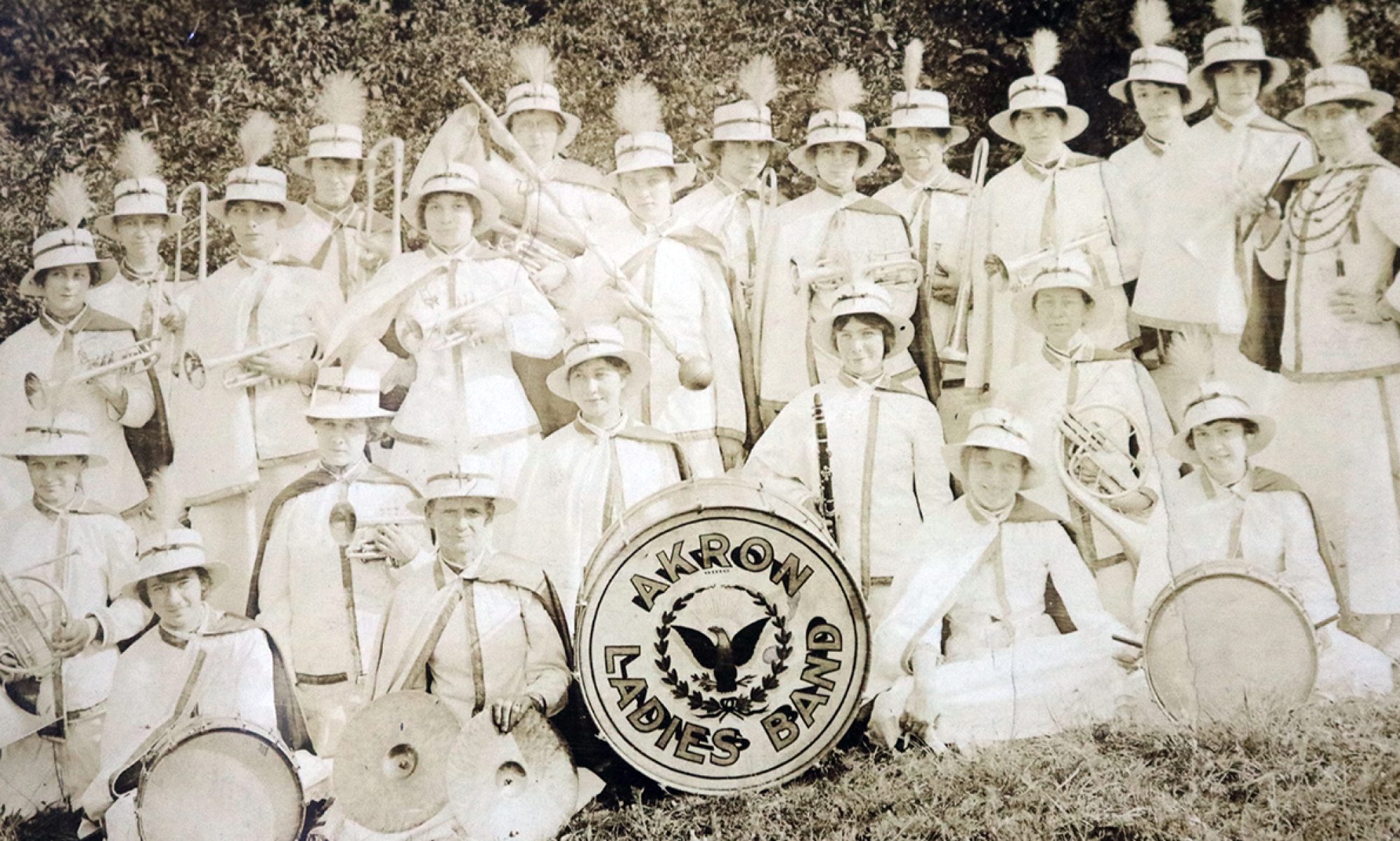| Elizabeth Smith Abbey, 1807-1874 |
| Mary Hickox Bronson, 1777-1858 |
| Mary Ingersol Tod Evans, 1802-1869 |
| Roxana Jones Howe, 1805-1875 |
In 1825, Akron was little more than a dream. But the untamed wilderness held all the ingredients for success – rich soil for those who planned an agricultural future and an ample water supply that could power future factories and mills.
Akron’s initial success, however, depended on an ambitious government-funded internal improvement program in the early 1800s – the canals. Akron was on the planned route of the ambitious transportation network across the region, the Ohio and Erie Canal. From 1825, when the construction started, until 1827, when Akron was linked by canal to Cleveland, thousands of men – Irish laborers who built the canal; artisans and mechanics, who offered valued services to the canal construction and helped build Akron, and farmers streamed into the area. In 1835, Akron again benefited from the canal frenzy when the Pennsylvania & Ohio Canal linked North and South Akron and the city to east and west.
The canals also brought disease, filth, vice and violence to the city. Akron newspapers in the 1820 and 1830s reported many residents suffered from a “touch of malaria,” although typhoid fever was probably was the real cause. The Pennsylvania & Ohio Canal flowed along what became Main Street, making it what one early resident called a “disreputable dump.” Scalawags, con men, “tramps,” “riffraff” and crooks were so numerous along canal that “decent” Akron residents generally avoided the area, one early inhabitant remembered.
Akron’s economy worsened in the five years that followed the Panic of 1837; Akron was reduced to what newspaper editor Samuel A. Lane called a “truck and dicker” barter system. Many early residents lost their jobs and their savings as factories closed down.
It was during this time that Akron women organized clubs and organizations to help alleviate the problems in the city. The Martha Washington women’s auxiliary to the Washington Total Abstinence Society male group established one of Akron’s first welfare programs for the less fortunate. The women started with the families of inebriates but soon reached out the families who were suffering during the depression that followed the Panic of 1837. The “Martha Washingtons” and later the “Daughters of Temperance” did fundraising to raise money to help the less fortunate. While newspapers acknowledged their work, the periodicals never reported the names of the women activists. City publications also did not report the names of women who formed the Female Moral Reform Society to save women and children from “depraved men.”
Antebellum women’s organizations became more active – and more militant — in the 1850s. The Summit County Female Labor Association worked to get a living wage for the sewing women in the city. This organization cut across class lines, with both seamstresses and affluent women working together to improve rates paid sewing women. Merchants who failed to pay the publicized minimum rates were identified in the media and the women encouraged a boycott of those who failed to meet the standards.
The women of these antebellum organizations were learning important lessons that they would apply in the years that followed. They had learned how to publicize their activities, execute successful events and carry out welfare services in the community.
Akron women activists are difficult to identify, given the practices of the city newspapers. Names of Akron antebellum women were gleaned from secondary sources.
Sources: Kathleen L. Endres, Akron’s “Better Half”: Women’s Clubs and the Humanization of the City, 1825-1924, Akron: University of Akron Press, 2006.
George W. Knepper, Akron: City at the Summit, Akron: Summit County Historical Society, 1981.
Samuel A. Lane, Fifty Years and Over of Akron and Summit County, Akron: Beacon Job Dept.,1892.
Photos courtesy of the Summit County Historical Society.
